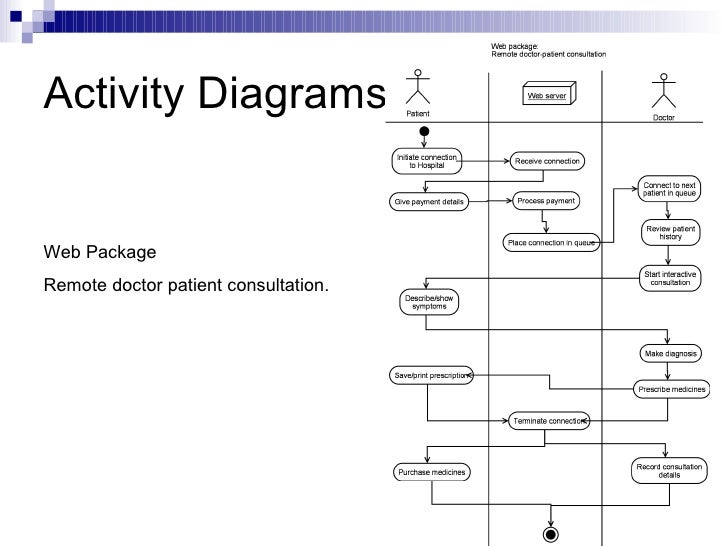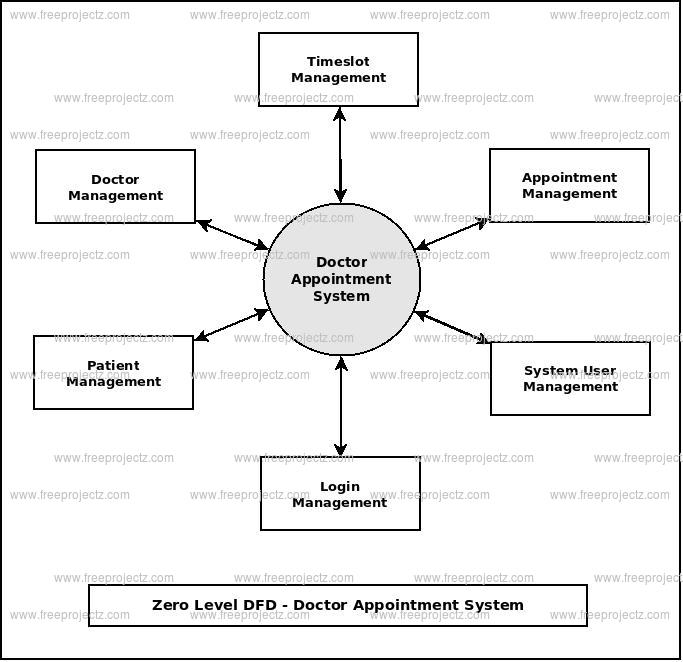Create a comprehensive and detailed activity diagram with ten or more elements or nodes.
- Activity Diagram For Doctor Appointment System
- Activity Diagram Doctorate
- Activity Diagram Doctor Salary
- Activity Diagram Doctor Of Medicine
- Activity Diagram Doctors
Affinity Diagram Example. An affinity diagram is the organized output from a brainstorming session. Use it to generate, organize, and consolidate information related to a product, process, complex issue, or problem. After generating ideas, group them according to their affinity, or similarity.
- Login Activity Diagram of Clinic Appointment System: This is the Login Activity Diagram of Clinic Appointment System, which shows the flows of Login Activity, where admin will be able to login using their username and password. After login user can manage all the operations on Doctors, Appointments, Doctor Fees, Doctor Schedule, Booking.
- USE CASE DIAGRAM. ACTIVITY DIAGRAM ONLY FOR DOCTOR MODULE THAT GIVEN IN THE SCENARIO. Is some one can solve this so please solve appropriate Solution for this scenario. Thnkew; Question: Here is a scenario for my Question. USE CASE DIAGRAM. ACTIVITY DIAGRAM ONLY FOR DOCTOR MODULE THAT GIVEN IN.
- Create a comprehensive and detailed activity diagram with ten or more elements or nodes. Using the patient information system case study: Create a comprehensive and detailed activity diagram with ten or more elements or nodes. Identify a set of use cases that illustrate the interactions between a doctor and the Mentcare system.
Using the patient information system case study: Create a comprehensive and detailed activity diagram with ten or more elements or nodes. Identify a set of use cases that illustrate the interactions between a doctor and the Mentcare system. Identify use cases with at least 4 other user groups, such as receptionists, medical records staff, the Human Resources Department, Legal Department, Pharmacy, Safety, Finance Department, potentially the patient population, etc. Create a comprehensive and detailed use case diagram containing at least five such actors.
Compare and contrast the two different diagramming approaches and how the goals of each vary. This short essay should be between 100 and 150 words.
UML diagrams going forward should be developed using a UML diagramming tool such as Gliffy, Creately, etc. Please print the file to a .pdf format prior to turning it in. You may also use drawing tools in MS Word, PowerPoint, or Visio. However, if Visio is used, please print the file to a .pdf format.
Attached is a copy of the patient information system case study for reference.
Answer preview to create a comprehensive and detailed activity diagram with ten or more elements or nodes.
APA
199 words
Get instant access to the full solution from yourhomeworksolutions by clicking the purchase button below
Related Questions:
On this page:
Deciding to become physically active can be one of the best things you can do for your health. Exercise and physical activity are not only great for your mental and physical health, but they can help keep you independent as you age. Now, let’s talk about getting started.
How Much Activity Do Older Adults Need?
According to the Physical Activity Guidelines for Americans (PDF, 14.5M) you should do at least 150 minutes (2 ½ hours) a week of moderate-intensity aerobic exercise, like brisk walking or fast dancing. Being active at least 3 days a week is best, but doing anything is better than doing nothing at all. You should also do muscle-strengthening activities, like lifting weights or doing sit-ups, at least 2 days a week. The Physical Activity Guidelines also recommend that as part of your weekly physical activity you combine multiple components of exercises. For example, try balance training as well as aerobic and muscle-strengthening activities. If you prefer vigorous-intensity aerobic activity (like running), aim for at least 75 minutes a week.
How Older Adults Can Get Started with Exercise
Exercise and physical activity are great for your mental and physical health and help keep you independent as you age. Here are a few things you may want to keep in mind when beginning to exercise.
Activity Diagram For Doctor Appointment System
Start Slowly When Beginning Exercise
The key to being successful and safe when beginning a physical activity routine is to build slowly from your current fitness level. Over-exercising can cause injury, which may lead to quitting. A steady rate of progress is the best approach.
To play it safe and reduce your risk of injury:
- Begin your exercise program slowly with low-intensity exercises.
- Warm up before exercising and cool down afterward.
- Pay attention to your surroundings when exercising outdoors.
- Drink water before, during, and after your workout session, even if you don’t feel thirsty. Play catch, kickball, basketball, or soccer.
- Wear appropriate fitness clothes and shoes for your activity.
- If you have specific health conditions, discuss your exercise and physical activity plan with your health care provider.
Download and fill out the Find Your Starting Point Activity Log to document your starting point. You’ll find space to track your normal activity levels for a few days—try and choose a few weekdays and one weekend day.
Don’t forget to test your current fitness level for all 4 types of exercise—endurance, balance, flexibility, and strength. You may be in shape for running, but if you’re not stretching, you’re not getting the maximum benefit from your exercise. Write down your results so you can track your progress as you continue to exercise.
Make notes about how these test exercises feel. If the exercises were hard, do what’s comfortable and slowly build up. If they were easy, you know your level of fitness is higher. You can be more ambitious and challenge yourself.
Once you start exercising, use the Monthly Progress Test to check in and see how you are improving, and celebrate your successes!
3 Questions to Ask Your Doctor About Exercise
Are you considering adding exercise to your daily routine or significantly increasing your level of activity? Talk to your doctor about the exercises and physical activities that are best for you. During your appointment, you can ask:
- Are there any exercises or activities I should avoid? Your doctor can make recommendations based on your health history, keeping in mind any recent surgeries or ongoing health conditions such as arthritis, diabetes, or heart disease. This would be a great time to check with your doctor about any unexplained symptoms you’ve been experiencing, such as chest pain or pressure, joint pain, dizziness, or shortness of breath. Your doctor may recommend postponing exercise until the problem is diagnosed and treated.
- Is my preventive care up to date? Your doctor can tell you if there are any tests you might need. For example, women over age 65 should be checked regularly for osteoporosis.
- How does my health condition affect my ability to exercise? Some health conditions can affect your exercise routine. For example, people with arthritis may need to avoid some types of activity, especially when joints are swollen or inflamed. Those with diabetes may need to adjust their daily schedule, meal plan, or medications when planning their activities. Your doctor can talk to you about any adjustments you need to make to ensure that you get the most out of your new exercise routine.
How to Set Fitness Goals
Many people find that having a firm goal in mind motivates them to move ahead on a project. Goals are most useful when they are specific, realistic, and important to you. Be sure to review your goals regularly as you make progress or your priorities change.
Download and use the Goal-Setting Worksheet to document where you want to be in both the short-and long-term.
Write Down Your Short-Term Fitness Goals
Short-term goals will help you make physical activity a regular part of your daily life. For these goals, think about the things you’ll need to get or do in order to be physically active. For example, you may need to buy walking shoes or fill out an Activity Log so you can figure out how to fit physical activity into your busy day. Make sure your short-term goals will really help you be active. Here are a few examples of short-term goals:
- Today, I will decide to be more active.
- Tomorrow, I will find out about exercise classes in my area.
- By the end of this week, I will talk with my friend about exercising with me a couple of times a week.
- In the next 2 weeks, I will make sure I have the shoes and comfortable clothes I need to start walking for exercise.
Write Down Your Long-Term Goals
After you write down your short-term goals, you can go on to identify your long-term goals. Focus on where you want to be in 6 months, a year, or 2 years from now. Long-term goals also should be realistic, personal, and important to you. Here are a few examples:
- By this time next year, I will swim 1 mile three times a week.
- Next summer, I will be able to play pitch and catch with my grandchildren.
- In 6 months, I will have my blood pressure under control by increasing my physical activity and following my doctor’s advice.
For Carl, 75, being able to do the things he enjoys motivates him to exercise every day. “I lift weights with my personal trainer at my gym twice a week and do stretching exercises. I also like bowling and fishing. I exercise so I can stay fit. It also helps keep my muscles strong and I have more energy to get going each day.”

Write a Plan to Add Exercise and Physical Activity to Your Life
Some people find that writing an exercise and physical activity plan helps them keep their promise to be active, while some people can plunge into a new project without planning ahead. If you choose to make a plan be sure the plan is realistic for you to do, especially as you gain experience in how to be active. You might even make a contract with a friend or family member to carry out your plan. Involving another person can help you keep your commitment.
Check out the interactive Activity Planner from the U.S. Dept. of Health and Human Services’ Move Your Way campaign. It lets you build a weekly physical activity plan and then print it out. You can choose from a variety of fun and exciting endurance (aerobic) and strength exercises, personalize your activities by location and purpose, and indicate how much of each exercise you will do. Once you create your plan, don’t forget to add in balance and flexibility exercises.
Activity Diagram Doctorate
Review and Update Your Exercise Plan Regularly
Regularly review and update your plan and long-term goals so that you can build on your success. Adjust your plan as you progress or if your schedule changes. You may find that things like vacation or illness can interrupt your physical activity routine. Don’t get discouraged! You can start exercising again and be successful. You can use a Weekly Exercise and Physical Activity Plan to write down your activities.
For More Information About Exercise and Physical Activity
Office of Disease Prevention and Health Promotion (ODPHP)
240-453-8280
odphpinfo@hhs.gov
https://health.gov/
American Council on Exercise
888-825-3636 (toll-free)
receptionist@acefitness.org
www.acefitness.org

Centers for Disease Control and Prevention (CDC)
800-232-4636 (toll-free)
888-232-6348 (TTY/toll-free)
cdcinfo@cdc.gov
www.cdc.gov
MedlinePlus
National Library of Medicine
www.medlineplus.gov
Activity Diagram Doctor Salary
This content is provided by the NIH National Institute on Aging (NIA). NIA scientists and other experts review this content to ensure it is accurate and up to date.
Activity Diagram Doctor Of Medicine

Activity Diagram Doctors
Content reviewed: April 03, 2020